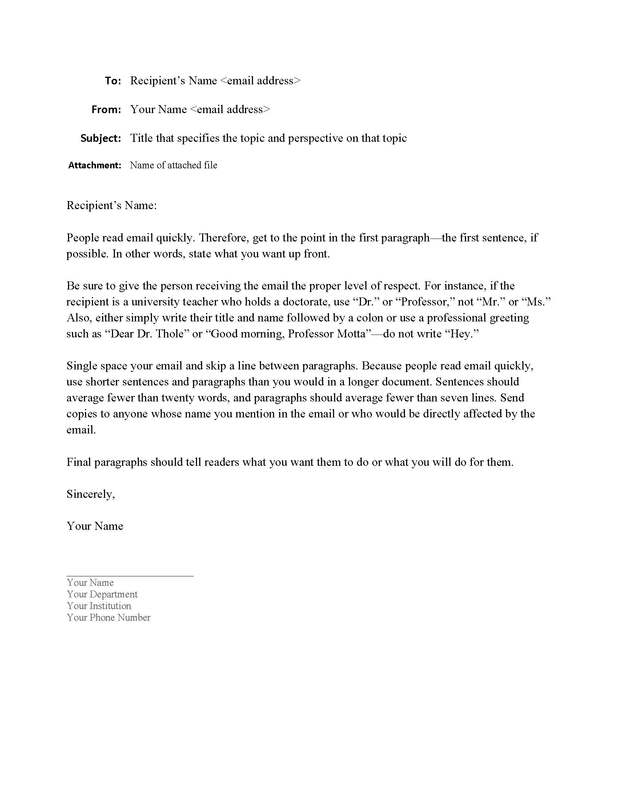Writing Professional EmailsTo: Main Recipient
cc: Secondary Recipients Attachment: Names of Attached Files Subject: Title of E-mail in Initial Capitals Name of Main Recipient: Engineers and scientists use e-mails to make requests, to answer questions, and to give announcements. E-mails are read quickly. For that reason, get to the point in the first paragraph--the first sentence, if possible. In other words, state what you want up front. Be careful about e-mails that make complaints, which are usually better handled in person. In e-mails, keep the sentence lengths and paragraph lengths relatively short. Sentences should average fewer than twenty words, and paragraphs should average fewer than seven lines. In this format, which arises from a combination of professional formats, you should single space the text, skip a line between paragraphs, and use a typeface that is easily read on a computer. If possible, keep the total e-mail length to a length that can be viewed entirely on the screen. Because the reader sees only the title of your e-mail in the Inbox or in the folder where it has been filed, you should give thought to that title. Choose a title that orients the reader to the subject of the e-mail and, if possible, distinguishes your e-mail from other e-mails about that subject. For example, choose "Proposal Draft for Our ME 440W Design Project" as opposed to "Design Project" or "ME 440W." With e-mails, send copies to anyone whose name you mention in the e-mail or who would be directly affected by the e-mail. Also, be sure to mention explicitly any attachments. Finally, remember that final paragraphs of e-mails generally tell readers what you want them to do or what you will do for them. Sincerely, Your Name Your Contact Information |
Before writing a single word on an email, you should think about how your audience will read your email. |
